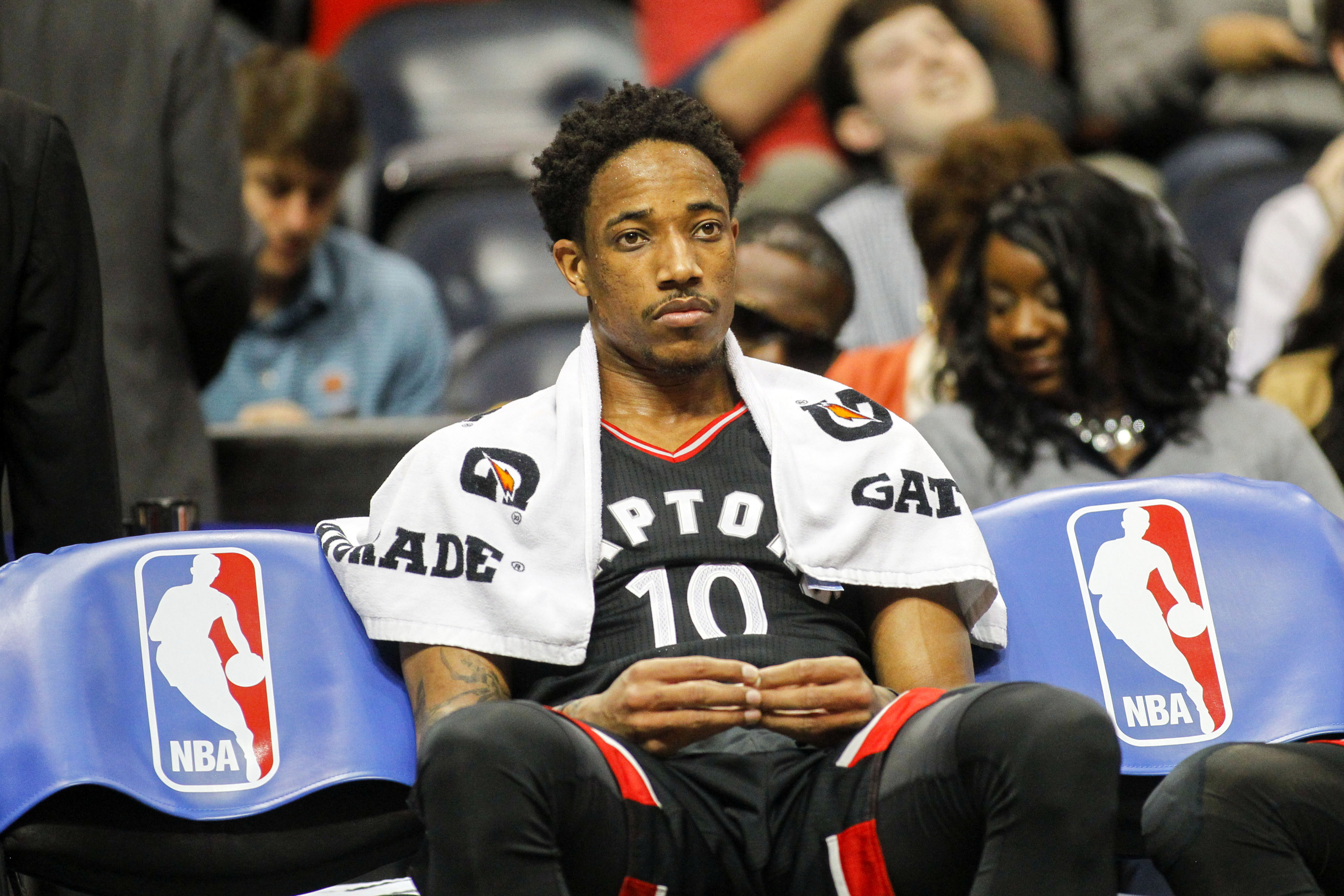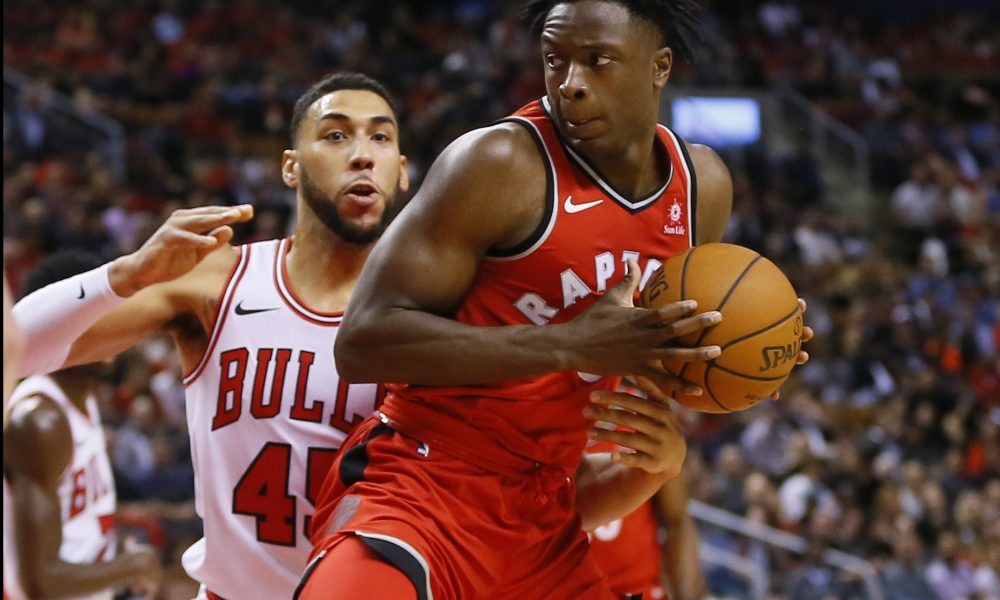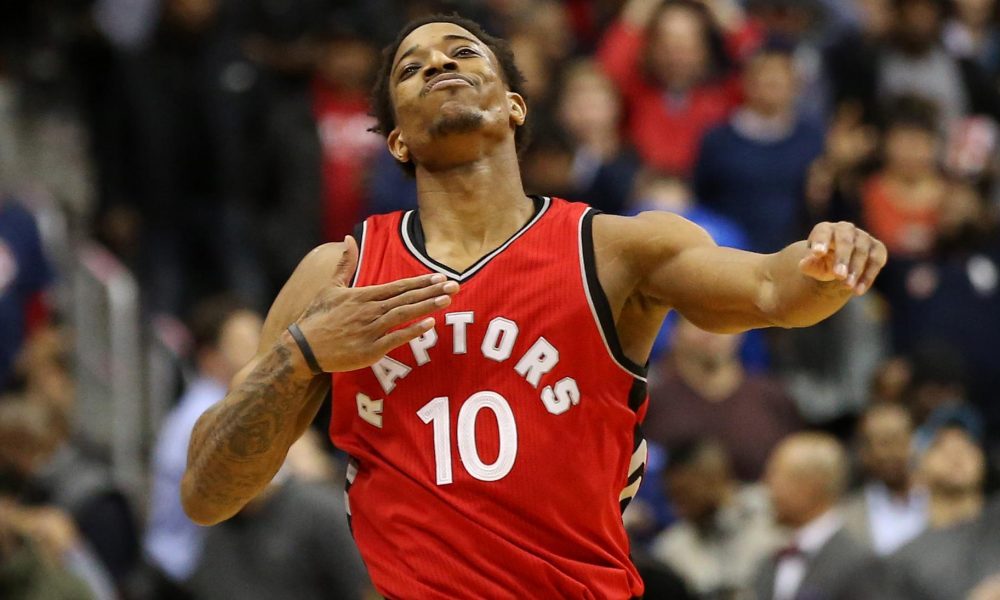Through the first 30 games of the 2017-18 NBA season, the Raptors have clearly established themselves as one of the league’s top teams. They are 22-8, good for second in the East and fourth in the league. They possess a +8.7 average point differential, which easily tops their conference and puts them just below the super-elite Rockets and Warriors. They’ve won nine of their last ten games, they’ve successfully revamped their offence and defence with effectively the same roster, and they now even have ESPN asking why they aren’t playing on Christmas Day.
All in all, that’s a pretty good start to the season. Now, though, is when it gets tricky.
The Raptors were in a similar spot a year ago, sitting at 22-8 after 30 games, before losing 16 of their next 26 games. In 2014-15, they were actually better through 30 games, at 23-7, but went on to lose eight of their next 12 games. In the recent past, when the Raptors have started the season strong, they have had a habit of losing their way after Christmas, which is something that they have to be mindful of if they want to keep pace with Boston and Cleveland in the East this season.
One of the biggest reasons for the Raptors’ strong start has been their revamped system. They’ve managed to stay in the top-ten in both offence and defence despite playing a much more pass-friendly game and a much more pressurized style at the other end. Without a doubt, this has caught some teams off-guard. For opponents that are used to playing an iso-happy club, they haven’t quite adapted to DeMar DeRozan whipping passes all over the court. For opponents that are used to soft pick-and-roll defence, they haven’t quite adapted to the quick rotations and grabby hands of Toronto’s defenders. It won’t stay that way forever, though.
You’re starting to see adjustments happening, albeit in dribs and drabs. You’re seeing teams give Normal Powell free paths to the basket, because they know a little pressure at the rim will cause him to miss or bobble the ball. You’re seeing teams encourage Pascal Siakam to handle the ball, because he doesn’t need much encouragement to start acting like he’s a point-forward and it rarely ends well for the Raptors when he does. Teams have tightened up on Jakob Poeltl, loosened up on Fred Van Vleet, and they are starting to look to cut-off Toronto’s penetrate-and-kick game. So far, nothing has really done much to affect Toronto’s winning percentage, but by that same token, the Raptors haven’t exactly been playing a murderers row of opponents executing those strategies.
The concern mostly stems from this team’s historical lack of adaptability. It seems counter-intuitive, perhaps, to highlight adaptability issues in a season defined by a coach and a team re-inventing themselves, but there is a big difference between having an offseason to plan and making adjustments mid-season on-the-fly. These Raptors still have some very unappealing flaws: They are not a strong rebounding team, they are in the bottom-third in the league in three-point accuracy, and their once-vaunted bench now struggles to score. They have lost games this season as a result of all of these warts, and while their overall record demonstrates that these haven’t been crippling defects, they aren’t going to be easy to paper over forever, either.
Teams that struggle to rebound afford opposing teams extra shots at the basket, which allows opponents survive on a lower shooting percentage (it also puts pressure on your own team’s shooting when you can’t routinely secure offensive rebounds, and the Raptors are 22nd in the league in second-chance points). Teams that struggle to connect on threes are at an obvious disadvantage in today’s NBA, and Toronto’s lack of consistency from outside is going to clog the middle and give opposing teams time to recover in their rotations. You aren’t going to scramble as much if you aren’t that worried about who is taking that outside shot. It also neuters guys like C.J. Miles, because opponents know to key in on him, because he is often the only three-point threat when he is out on the court.
Which brings us to the last issue, which is the bench. Now, Toronto’s bench is still strong, but their youth is beginning to show. They simply don’t have the weapons to create offence when they can’t create heaps of turnovers, and you’re already seeing the minutes for five-man bench units begin to ebb. In a way, Dwane Casey was gifted an unexpected bonus when those units would produce early in the season, and the increased time that the starters now have to play with the bench is what was likely expected all along. However, Casey also needs to keep the minutes down for DeRozan, Kyle Lowry, and Serge Ibaka so that they are fresh for the postseason, which means that the bench is going to be depended on to produce from now until April. If there is going to be a trade this season, the smart money is on a dash of veteran help for that second unit. If Powell can’t figure it out at the offensive end, for instance, the club may need some late-season help at the expense of his minutes. It’s commendable that Casey has been willing to let the reserves stretch their legs and play a little out of control in an attempt to speed up their development, but smart teams will be able snuff that stuff out, and so the Raptors have to be ready with a counterattack that is more than just ratcheting up the playing time for their frontline players.
It’s an odd circumstance to have to balance, too. The Raptors have done a remarkable job in developing a lot of unheralded prospects. They’ve built out a rotation with top-ten draft picks, late first-rounders, second rounders, and undrafted players, and it’s been startlingly effective. Just about every bet that they’ve made has paid off (sorry, Bruno), and so it would be difficult to mess with that to create a slight uptick in overall productivity.
But that’s where their duelling objectives come into play. The Raptors want to win now, and they’ve spent a lot of money to put themselves into a position to do so. To that end, sacrificing a young player or two to bring in reinforcements for a late-season and postseason run makes a lot of sense. However, the team is also capped-out, and needs inexpensive players to create depth, plus their youth is their pipeline for the future, and they don’t want to just throw that away, either. So, what do you do? Do you maintain the status quo, figuring that it’s gotten you this far, but risk a backslide from the bench’s productivity, or do you cash in a chip or two to strengthen the top-line talent, even if it hurts your depth and your future?
Of course, maybe none of this winds up hurting Toronto. Just because they’ve always struggled after hot starts doesn’t mean this season needs to be the same. Maybe what they’ve started is just part of a bigger plan that they intend to finish. The confidence and poise that the Raptors have shown thus far this season has been somewhat unprecedented, and their success hasn’t appeared predicated on anything that is wildly unrepeatable. They play hard, they play smart, and so far that has led them to winning at an elite level. Surely they are as aware of their own history as those outside of the organization, and they are prepared for the league’s counterpunch as they start seeing teams for a second and third time. All three of Casey, DeRozan, and Lowry have been there for the aforementioned dips, and it would probably be foolhardy to assume that they haven’t planned for it.
Even still, one has to be wary. While the Raptors have shut up just about every doubter this season — from those doubting their ability to change their style of play to those that doubted their ability to improve with a virtually unchanged roster — that doesn’t mean that they’ll continue their successes unabated. It’s their job to perform at their highest level, and it is the job of 29 other organizations to stop them from doing so. As more informed scouting (and improved opponents) start coming Toronto’s way over the next several weeks, the club is going to have to show that they are prepared for the inevitable counterpunch. If they are, it would prove an unprecedented success for this organization, and another reason to believe that this season isn’t going to go down like those of recent past. Still, given that recent past, we’re going to have to see them do it before we can confidently say that they will.



